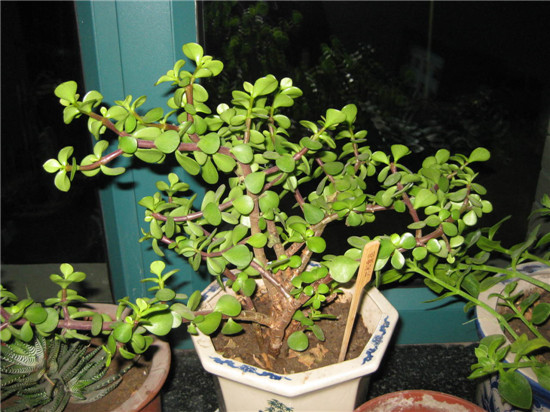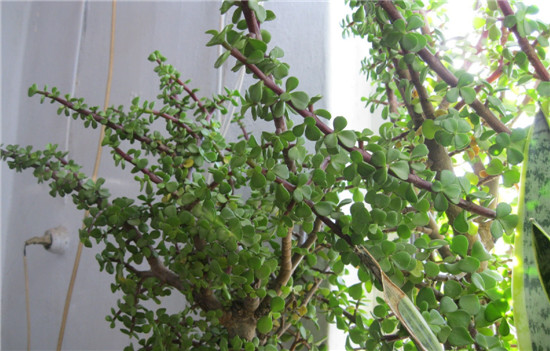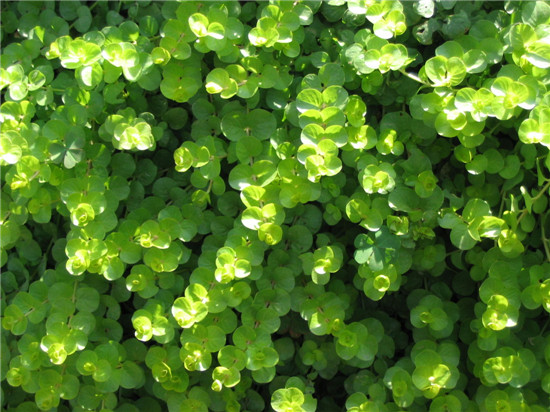How to plant purslane
Potted Portulaca oleracea not only grows faster, but also loves its fleshy flowers and leaves. So, do you know what the cultivation method of purslane is? Let's go and have a look.

Basic information of purslane
Alias: purslane, ginkgo biloba, small ginkgo biloba, silver gongsun tree, golden branch jade leaf, lobular glass Cui, jade leaf.
Families and genera: Portulaca, Portulaca.
Fleshy evergreen subshrubs, up to 4 m high. The stem is fleshy, the base is slightly Lignified, much branched, near-level growth, the new stem is reddish brown, the old stem is gray-white, and the internodes are obvious. Leaves opposite, Obovate, about 1.2 cm long and 1 cm wide, entire, bright green, fleshy. It blossoms from May to July with small and light pink flowers.
Horse-toothed wide tree stem thick and inflated, leaves small and interesting, very much like the leaves of purslane, and very rich ancient tree charm; strong habits, easy to maintain. In addition to being used as a potted plant, it is also a good plant species for making stump bonsai. Because the florist gave it a luxurious and colorful trade name-"Golden branches and Yuye", it is more loved by people.

How to raise purslane
Portulaca oleracea is often propagated by cuttings. Portulaca oleracea has the characteristics of warmth, Yang and Yin. Strong drought tolerance. Pot soil should be well drained, each watering should be thoroughly watered and rewatered. Bogey basin soil is often in a state of over-wet. Watering during the growing period to achieve "no dry, no watering, watering thoroughly", to avoid stagnant water in the basin soil, otherwise it will cause rotten roots.
Put it in a sunny place indoors in winter, stop fertilizing and control watering, the temperature should be above 10 ℃, although the plant will not die at about 5 ℃, but the leaves will fall off a large number. The basin is turned every 2 to 3 years in spring, and the basin soil can use sandy soil with medium fertility and good drainage and air permeability. When turning the pot, the plant is re-cut to remove weak branches and other branches that affect the shape of the tree.
Portulaca oleracea is mainly for viewing leaves and can be planted in a hanging pot. it is also a good material for making bonsai.
Is purslane poisonous? Purslane is a plant for both medicine and food. The whole herb is for medicinal use, which has the effects of clearing heat and dampness, detoxifying and detumescence, anti-inflammation and diuresis. Its seeds also have eye-catching special effects.

Culture methods of Portulaca oleracea
Portulaca oleracea, also known as ginkgo, lobular glass Cui, is a perennial fleshy shrub of Portulaca oleracea. Portulaca oleracea has green stems and light pink flowers. Potted Portulaca oleracea grows faster and its stem branches are irregular. Under semi-shady conditions, the stem grows vigorously, but it is easy to grow in vain.
Temperature: Portulaca oleracea likes to be warm, and the most suitable temperature for growth is 20-25 ℃. Do not tolerate low temperature, the overwintering temperature should be maintained above 10 ℃, low temperature will cause defoliation. Also can not bear the heat, summer high temperature when the plant is semi-dormant, should strengthen ventilation, more water spray to the environment, in order to reduce the temperature. At the same time, avoid muggy and humid environment, otherwise leaves will fall due to root rot.
Lighting: purslane trees like plenty of sunlight, even in hot summer, they need to receive direct sunlight. It is best to receive more than 4 hours of direct sunlight every day. Under the condition of sufficient sunlight, the plant shape is compact, the leaves are small and thick, and the ornamental value is high. Tolerant to semi-shade, although branches and leaves grow luxuriantly under semi-shade conditions, it is easy to grow, branches and leaves are loose and uncompact, stems and nodes become longer, leaves are large and thin, resulting in unbeautiful plant shape and green twigs; the color of spotted brocade on the leaves of Portulaca oleracea will decrease, resulting in a decrease in ornamental. If there is not enough light in the place, 12 hours of artificial light can be given, which can also make the plant grow normally. Portulaca oleracea prefers a slightly overcast environment and needs proper shading in summer.

Watering: Portulaca oleracea has more water in the plant because of its fleshy branches and leaves, so it likes the dry soil environment. When watering, we should master "dry and wet, dry rather than wet". Too wet basin soil can easily lead to rotten roots. May-June is the period of vigorous plant growth, it should be fully shallow water to keep the basin soil moist, but to prevent the basin soil from being too wet. Check the plum rainy season in time to remove the stagnant water from the basin. Watering should be controlled when semi-dormant in summer, high temperature and humidity can easily cause rotten roots. When the weather turns cool in autumn and it is a suitable period for plant growth, sufficient water should be supplied to keep the basin soil moist and not too wet. Watering should be controlled in winter to keep the basin soil in a dry state.
Fertilization: Portulaca oleracea does not like fat. Thin nitrogen fertilizer was applied every 15-20 days during spring and autumn growth. The species with speckled leaves should be fertilized with phosphorus and potassium fertilizer to make the leaves more beautiful. When there is more nitrogen fertilizer, the green part of the leaves of Portulaca oleracea will increase, resulting in a decrease in ornamental value.
Pruning: Portulaca oleracea has faster growth, more branches, and irregular branches, so it can be pruned and shaped at any time in the process of growth to maintain a beautiful plant shape.
The above is the whole content of how to plant purslane for you. I hope this article can help you. Please continue to follow us.
Fertilization: Portulaca oleracea does not like fat. Thin nitrogen fertilizer was applied every 15-20 days during spring and autumn growth. The species with speckled leaves should be fertilized with phosphorus and potassium fertilizer to make the leaves more beautiful. When there is more nitrogen fertilizer, the green part of the leaves of Portulaca oleracea will increase, resulting in a decrease in ornamental value.
Pruning: Portulaca oleracea has faster growth, more branches, and irregular branches, so it can be pruned and shaped at any time in the process of growth to maintain a beautiful plant shape.
The above is the whole content of how to plant purslane for you. I hope this article can help you. Please continue to follow us.
Related
- Wuhan Hospital Iron Tree Blooming Result Was Instantly Frightened by the Gardener Master
- Which variety of camellia is the most fragrant and best? Which one do you like best?
- What is the small blue coat, the breeding methods and matters needing attention of the succulent plant
- Dormancy time and maintenance management of succulent plants during dormancy
- Minas succulent how to raise, Minas succulent plant pictures
- What are the varieties of winter succulent plants
- How to raise succulent plants in twelve rolls? let's take a look at some experience of breeding twelve rolls.
- Attention should be paid to water control for succulent plants during dormant period (winter and summer)
- Watering experience of twelve rolls of succulent plants
- Techniques for fertilizing succulent plants. An article will let you know how to fertilize succulent plants.



